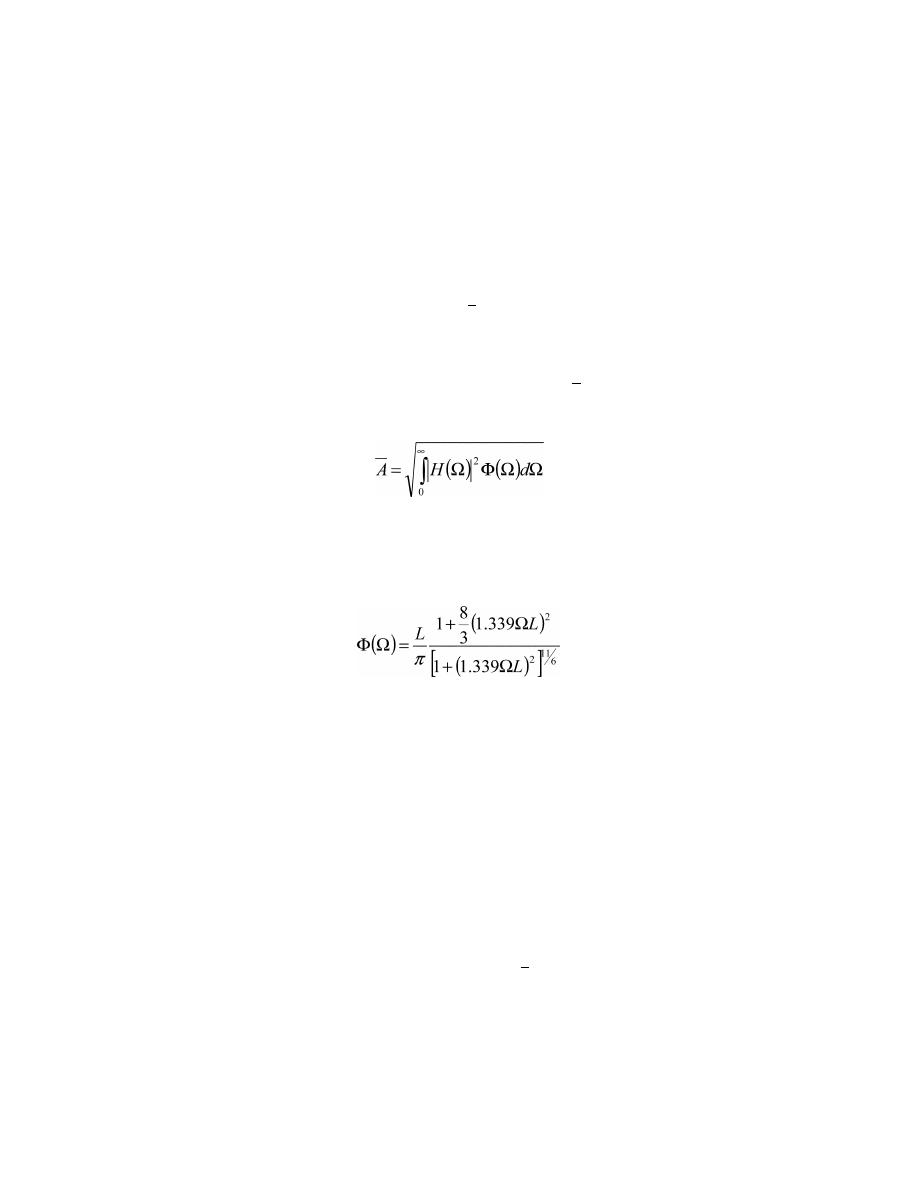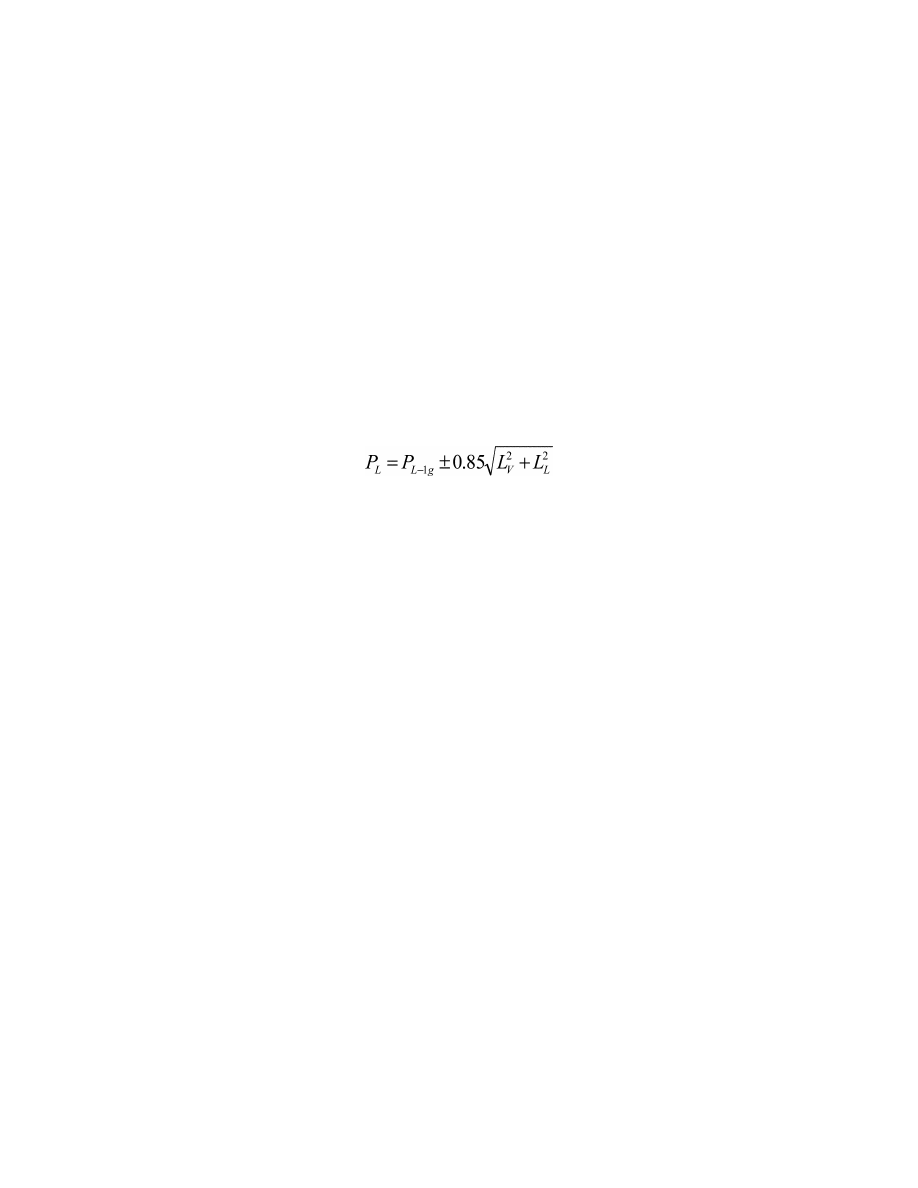
238
14 CFR Ch. I (1–1–24 Edition)
§ 25.341
(1) May not be less than
¥
1.0 at
speeds up to
V
C
; and
(2) Must vary linearly with speed
from the value at
V
C
to zero at
V
D
.
(d) Maneuvering load factors lower
than those specified in this section
may be used if the airplane has design
features that make it impossible to ex-
ceed these values in flight.
[Doc. No. 5066, 29 FR 18291, Dec. 24, 1964, as
amended by Amdt. 25–23, 35 FR 5672, Apr. 8,
1970]
§ 25.341
Gust and turbulence loads.
(a)
Discrete Gust Design Criteria. The
airplane is assumed to be subjected to
symmetrical vertical and lateral gusts
in level flight. Limit gust loads must
be determined in accordance with the
provisions:
(1) Loads on each part of the struc-
ture must be determined by dynamic
analysis. The analysis must take into
account unsteady aerodynamic charac-
teristics and all significant structural
degrees of freedom including rigid body
motions.
(2) The shape of the gust must be:
U
U
ds
=
⎛
⎝⎜
⎞
⎠⎟
⎡
⎣
⎢
⎤
⎦
⎥
2
1- Cos
s
H
π
for 0
≤
s
≤
2H
where—
s = distance penetrated into the gust (feet);
U
ds
= the design gust velocity in equivalent
airspeed specified in paragraph (a)(4) of
this section; and
H = the gust gradient which is the distance
(feet) parallel to the airplane’s flight
path for the gust to reach its peak veloc-
ity.
(3) A sufficient number of gust gra-
dient distances in the range 30 feet to
350 feet must be investigated to find
the critical response for each load
quantity.
(4) The design gust velocity must be:
U
U
F H
ds
ref g
=
(
)
350
1 6
where—
U
ref
= the reference gust velocity in equiva-
lent airspeed defined in paragraph (a)(5)
of this section.
F
g
= the flight profile alleviation factor de-
fined in paragraph (a)(6) of this section.
(5) The following reference gust ve-
locities apply:
(i) At airplane speeds between V
B
and
V
C
: Positive and negative gusts with
reference gust velocities of 56.0 ft/sec
EAS must be considered at sea level.
The reference gust velocity may be re-
duced linearly from 56.0 ft/sec EAS at
sea level to 44.0 ft/sec EAS at 15,000
feet. The reference gust velocity may
be further reduced linearly from 44.0 ft/
sec EAS at 15,000 feet to 20.86 ft/sec
EAS at 60,000 feet.
(ii) At the airplane design speed V
D
:
The reference gust velocity must be 0.5
times the value obtained under
§ 25.341(a)(5)(i).
(6) The flight profile alleviation fac-
tor, F
g
, must be increased linearly from
the sea level value to a value of 1.0 at
the maximum operating altitude de-
fined in § 25.1527. At sea level, the flight
profile alleviation factor is determined
by the following equation:
F
F
F
Where
F
Z
F
R Tan
R
R
Maximum Landing Weight
Maximum Take off Weight
R
Maximum Zero Fuel Weight
Maximum Take off Weight
g
gz
gm
gz
mo
gm
=
+
(
)
= −
=
⎛
⎝
⎞
⎠
=
=
0 5
1
250000
4
2
1
1
2
.
:
;
;
;
;
π
-
-
Z
mo
= Maximum operating altitude defined in
§ 25.1527 (feet).
(7) When a stability augmentation
system is included in the analysis, the
effect of any significant system non-
linearities should be accounted for
when deriving limit loads from limit
gust conditions.
(b)
Continuous turbulence design cri-
teria. The dynamic response of the air-
plane to vertical and lateral contin-
uous turbulence must be taken into ac-
count. The dynamic analysis must take
into account unsteady aerodynamic
characteristics and all significant
structural degrees of freedom including
VerDate Sep<11>2014
09:06 Jun 28, 2024
Jkt 262046
PO 00000
Frm 00248
Fmt 8010
Sfmt 8010
Y:\SGML\262046.XXX
262046
ER09FE96.018</MATH>
ER09FE96.019</MATH>
EN08MR96.004</MATH>
jspears on DSK121TN23PROD with CFR

239
Federal Aviation Administration, DOT
§ 25.341
rigid body motions. The limit loads
must be determined for all critical alti-
tudes, weights, and weight distribu-
tions as specified in § 25.321(b), and all
critical speeds within the ranges indi-
cated in § 25.341(b)(3).
(1) Except as provided in paragraphs
(b)(4) and (5) of this section, the fol-
lowing equation must be used:
P
L
= P
L
¥
1g
±
U
σ
A
¯
Where—
P
L
= limit load;
P
L
¥
1g
= steady 1g load for the condition;
A
= ratio of root-mean-square incremental
load for the condition to root-mean-
square turbulence velocity; and
U
σ
= limit turbulence intensity in true air-
speed, specified in paragraph (b)(3) of this
section.
(2) Values of
A
must be determined
according to the following formula:
Where—
H(
W
) = the frequency response function, de-
termined by dynamic analysis, that re-
lates the loads in the aircraft structure
to the atmospheric turbulence; and
F
(
W
) = normalized power spectral density of
atmospheric turbulence given by—
Where—
W
= reduced frequency, radians per foot; and
L = scale of turbulence = 2,500 ft.
(3) The limit turbulence intensities,
U
σ
, in feet per second true airspeed re-
quired for compliance with this para-
graph are—
(i) At airplane speeds between V
B
and
V
C
:
U
σ
= U
σ
ref
F
g
Where—
U
σ
ref
is the reference turbulence intensity
that varies linearly with altitude from 90
fps (TAS) at sea level to 79 fps (TAS) at
24,000 feet and is then constant at 79 fps
(TAS) up to the altitude of 60,000 feet.
F
g
is the flight profile alleviation factor de-
fined in paragraph (a)(6) of this section;
(ii) At speed V
D
: U
σ
is equal to
1
⁄
2
the
values obtained under paragraph
(b)(3)(i) of this section.
(iii) At speeds between V
C
and V
D
: U
σ
is equal to a value obtained by linear
interpolation.
(iv) At all speeds, both positive and
negative incremental loads due to con-
tinuous turbulence must be considered.
(4) When an automatic system affect-
ing the dynamic response of the air-
plane is included in the analysis, the
effects of system non-linearities on
loads at the limit load level must be
taken into account in a realistic or
conservative manner.
(5) If necessary for the assessment of
loads on airplanes with significant non-
linearities, it must be assumed that
the turbulence field has a root-mean-
square velocity equal to 40 percent of
the U
σ
values specified in paragraph
(b)(3) of this section. The value of limit
load is that load with the same prob-
ability of exceedance in the turbulence
field as
A
U
σ
of the same load quantity
in a linear approximated model.
(c)
Supplementary gust conditions for
wing-mounted engines. For airplanes
equipped with wing-mounted engines,
the engine mounts, pylons, and wing
supporting structure must be designed
VerDate Sep<11>2014
09:06 Jun 28, 2024
Jkt 262046
PO 00000
Frm 00249
Fmt 8010
Sfmt 8010
Y:\SGML\262046.XXX
262046
ER11DE14.025</GPH>
ER11DE14.026</GPH>
jspears on DSK121TN23PROD with CFR

240
14 CFR Ch. I (1–1–24 Edition)
§ 25.343
for the maximum response at the na-
celle center of gravity derived from the
following dynamic gust conditions ap-
plied to the airplane:
(1) A discrete gust determined in ac-
cordance with § 25.341(a) at each angle
normal to the flight path, and sepa-
rately,
(2) A pair of discrete gusts, one
vertical and one lateral. The length of
each of these gusts must be independ-
ently tuned to the maximum response
in accordance with § 25.341(a). The pene-
tration of the airplane in the combined
gust field and the phasing of the
vertical and lateral component gusts
must be established to develop the
maximum response to the gust pair. In
the absence of a more rational anal-
ysis, the following formula must be
used for each of the maximum engine
loads in all six degrees of freedom:
Where—
P
L
= limit load;
P
L-1g
= steady 1g load for the condition;
L
V
= peak incremental response load due to
a vertical gust according to § 25.341(a);
and
L
L
= peak incremental response load due to
a lateral gust according to § 25.341(a).
[Doc. No. 27902, 61 FR 5221, Feb. 9, 1996; 61 FR
9533, Mar. 8, 1996; Doc. No. FAA–2013–0142; 79
FR 73467, Dec. 11, 2014; Amdt. 25–141, 80 FR
4762, Jan. 29, 2015; 80 FR 6435, Feb. 5, 2015]
§ 25.343
Design fuel and oil loads.
(a) The disposable load combinations
must include each fuel and oil load in
the range from zero fuel and oil to the
selected maximum fuel and oil load. A
structural reserve fuel condition, not
exceeding 45 minutes of fuel under the
operating conditions in § 25.1001(e) and
(f), as applicable, may be selected.
(b) If a structural reserve fuel condi-
tion is selected, it must be used as the
minimum fuel weight condition for
showing compliance with the flight
load requirements as prescribed in this
subpart. In addition—
(1) The structure must be designed
for a condition of zero fuel and oil in
the wing at limit loads corresponding
to—
(i) A maneuvering load factor of +
2.25; and
(ii) The gust and turbulence condi-
tions of § 25.341(a) and (b), but assuming
85% of the gust velocities prescribed in
§ 25.341(a)(4) and 85% of the turbulence
intensities prescribed in § 25.341(b)(3).
(2) Fatigue evaluation of the struc-
ture must account for any increase in
operating stresses resulting from the
design condition of paragraph (b)(1) of
this section; and
(3) The flutter, deformation, and vi-
bration requirements must also be met
with zero fuel.
[Doc. No. 5066, 29 FR 18291, Dec. 24, 1964, as
amended by Amdt. 25–18, 33 FR 12226, Aug. 30,
1968; Amdt. 25–72, 55 FR 37607, Sept. 12, 1990;
Amdt. 25–86, 61 FR 5221, Feb. 9, 1996; Amdt.
25–141, 79 FR 73468, Dec. 11, 2014]
§ 25.345
High lift devices.
(a) If wing flaps are to be used during
takeoff, approach, or landing, at the
design flap speeds established for these
stages of flight under § 25.335(e) and
with the wing flaps in the cor-
responding positions, the airplane is
assumed to be subjected to symmet-
rical maneuvers and gusts. The result-
ing limit loads must correspond to the
conditions determined as follows:
(1) Maneuvering to a positive limit
load factor of 2.0; and
(2) Positive and negative gusts of 25
ft/sec EAS acting normal to the flight
path in level flight. Gust loads result-
ing on each part of the structure must
be determined by rational analysis.
The analysis must take into account
the unsteady aerodynamic characteris-
tics and rigid body motions of the air-
craft. The shape of the gust must be as
described in § 25.341(a)(2) except that—
U
ds
= 25 ft/sec EAS;
H = 12.5 c; and
c = mean geometric chord of the wing (feet).
(b) The airplane must be designed for
the conditions prescribed in paragraph
(a) of this section, except that the air-
plane load factor need not exceed 1.0,
VerDate Sep<11>2014
09:06 Jun 28, 2024
Jkt 262046
PO 00000
Frm 00250
Fmt 8010
Sfmt 8010
Y:\SGML\262046.XXX
262046
ER11DE14.027</GPH>
jspears on DSK121TN23PROD with CFR


